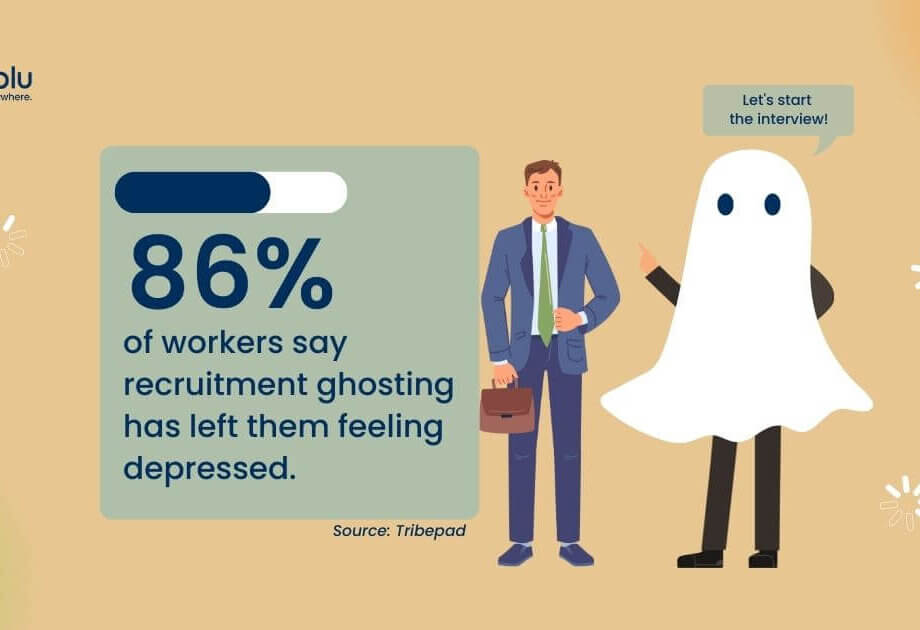The Silent Treatment: Understanding Recruiter Ghosting in Singapore
For many job seekers in Singapore, the experience of being ignored by recruiters—commonly known as “ghosting”—has become an all-too-familiar frustration. Despite investing time and effort into applications, candidates often find themselves met with silence, even after promising initial conversations or interviews. This phenomenon is not unique to Singapore, but local data and stories reveal just how widespread and impactful it has become in the city-state’s competitive job market.
- The Silent Treatment: Understanding Recruiter Ghosting in Singapore
- What Is Recruiter Ghosting and Why Does It Happen?
- How Widespread Is the Problem?
- Ghosting Goes Both Ways: Candidates and Employers
- The Rise of ‘Ghost Jobs’ and Unethical Hiring Practices
- The Human Cost: Mental Health and Professional Reputations
- Why Don’t Recruiters Just Respond?
- Technology’s Double-Edged Sword: AI, Automation, and Accountability
- What Can Job Seekers Do?
- What Should Employers and Recruiters Do?
- In Summary
According to a LinkedIn poll conducted by recruitment agency Robert Walters Singapore, a staggering 88% of respondents reported being ghosted by recruiters during their job search. The issue is so prevalent that it has sparked heated discussions on forums, social media, and even among industry professionals themselves.
What Is Recruiter Ghosting and Why Does It Happen?
Recruiter ghosting refers to the abrupt cessation of communication from a recruiter or employer, often after initial contact or even after interviews. Unlike a simple lack of response to a resume submission, ghosting typically occurs after some form of engagement—such as a phone call, email exchange, or interview—leaving candidates in a state of uncertainty and disappointment.
Dr. Chong Sinhui, assistant professor in management at Nanyang Technological University, explains that the rise of digitized job application systems has dramatically increased the volume of applications recruiters must handle. With features like “easy apply” and algorithm-driven recommendations, candidates can submit dozens of applications with minimal effort. While this convenience benefits job seekers, it also means recruiters are inundated with hundreds, sometimes thousands, of resumes for each role.
Recruiter Mr. Loh, who manages multiple job postings simultaneously, describes the challenge: he often has to review at least 30 applicants per opening to shortlist a handful for clients. With urgent roles needing to be filled in as little as two weeks and more challenging positions taking up to nine months, the sheer workload makes personalized communication with every applicant unrealistic.
Industry insiders acknowledge that while high application volumes explain some of the silence, they do not excuse poor communication. As one recruiter in the banking sector told eFinancialCareers, “Ghosting candidates seems to have become the norm in the banking industry… I always made sure to go back to the rejected candidates and drop an email to say they didn’t fit—even if just a one-liner. It’s not difficult.”
How Widespread Is the Problem?
Ghosting is not limited to a few unlucky job seekers. In Singapore, stories abound of candidates applying for hundreds of jobs and hearing back from only a handful. On Reddit and other forums, users share anecdotes of recruiters who conduct detailed initial screenings, promise updates, and then disappear without explanation. One user recounted being approached by four different recruiters in two weeks, only to be left hanging after each promised a follow-up.
The scale of competition exacerbates the issue. A recent post on the Complaint Singapore Facebook page highlighted a job listing for a Procurement Executive at SingTel that attracted 725 applicants. Some roles reportedly receive over 1,000 applications, making the odds of receiving a response slim. As one netizen put it, “The chances of getting the job are like winning a lottery.”
This intense competition is driven by several factors:
- Layoffs and career transitions have increased the number of active job seekers.
- Employers are recruiting less actively due to economic uncertainties and cost-cutting pressures.
- Job portals and AI tools make it easier for candidates to apply en masse, further swelling the applicant pool.
Ghosting Goes Both Ways: Candidates and Employers
While much of the focus is on recruiters ghosting candidates, the reverse is also true. A 2021 survey by Indeed found that 28% of job seekers admitted to ghosting employers—by not showing up for interviews or even their first day at work. This mutual ghosting creates a toxic cycle: as employers expect candidates to disappear, they double-book interviews or keep recruitment ongoing, which in turn leads to more candidates being left in the dark.
Dr. Paul Lim, senior lecturer at Singapore Management University, notes that ghosting is a product of power dynamics in the job market. In an employer’s market, companies feel less obligation to respond to unsuccessful candidates. Conversely, in a candidate’s market, job seekers may ignore employers if better opportunities arise. Dr. Lim draws a parallel to online dating, where ghosting is also common: “If the person doesn’t contact you, do you wait day and night for the person to contact you?”
The Rise of ‘Ghost Jobs’ and Unethical Hiring Practices
Adding another layer of complexity is the phenomenon of “ghost job” postings—ads for positions that do not actually exist. These fake listings are used by some companies to create the illusion of growth, build a talent pipeline, or meet regulatory requirements. According to The Independent Singapore News, job seekers waste time and effort applying for these dead-end roles, only to be inevitably ghosted.
Warning signs of ghost jobs include:
- Listings that have been posted for months without updates
- Offers that seem too good to be true
- Vague job descriptions lacking key details
- Repeated postings with identical requirements
These practices not only frustrate candidates but also distort the true state of the job market, inflating the number of available roles and elongating the job search process.
The Human Cost: Mental Health and Professional Reputations
Being ghosted can take a toll on job seekers’ mental health. The lack of closure leaves candidates questioning their worth and replaying interactions in their minds. As Vulcan Post notes, “Our brains are designed to involuntarily linger on unresolved issues. And what can be more unsettling than someone cutting off all contact, leaving us in a state of bewilderment over what has gone wrong?”
For employers, ghosting can damage their reputation and make it harder to attract top talent in the future. Candidates who have negative experiences are likely to share their stories online or with peers, potentially deterring others from applying. As one recruiter put it, “The hiring process is an opportunity to build your brand organically, and candidates with a positive experience are likely to speak highly of the company to others.”
Why Don’t Recruiters Just Respond?
Given the negative impact, why do so many recruiters still ghost candidates? The answer lies in a combination of overwhelming workload, lack of standardized protocols, and sometimes, a lack of empathy. Recruiters may be juggling dozens of open roles and thousands of resumes, making it logistically challenging to respond to every applicant.
However, industry experts argue that at least those who have reached the interview stage deserve a response. As Jobs-Me points out, “If you’ve had an interview, you deserve an update—whether it’s a yes or no.” Even a generic rejection email can provide closure and maintain professionalism.
Technology’s Double-Edged Sword: AI, Automation, and Accountability
Technology has both contributed to and is now being used to address the ghosting problem. On one hand, AI-powered tools allow candidates to mass-apply for jobs, overwhelming recruiters. On the other, platforms like LinkedIn, Indeed, and Greenhouse are introducing features to increase transparency and accountability in the hiring process.
LinkedIn is testing “responsiveness insights” that show applicants which companies are actively reviewing applications. Indeed has introduced “responsive employer” badges and median response time labels. Greenhouse is piloting a set of badges that verify whether employers meet standards for respectful, communicative, prepared, and fair hiring processes. These initiatives aim to help job seekers identify companies that treat candidates well and encourage employers to improve their communication practices.
However, even with these tools, the challenge remains significant. As one talent acquisition manager noted, “If I could have a person literally just go through all the resumes and that is everything that they did, I don’t even know if we’d still be able to respond to everyone within some of the criteria.”
What Can Job Seekers Do?
While job seekers cannot control employer behavior, there are strategies to navigate the uncertainty of ghosting:
- Set Realistic Expectations: Understand that not every application will receive a response, especially if there has been no two-way contact.
- Follow Up Strategically: After an interview or meaningful engagement, wait a reasonable period (usually two weeks) before sending a polite follow-up email. Avoid spamming recruiters with repeated messages.
- Track Correspondence: Keep records of communication and ask recruiters for a timeline or preferred method of follow-up.
- Focus on Quality Over Quantity: Tailor applications to roles that closely match your skills and experience, rather than mass-applying to every opening.
- Network: Build relationships with recruiters and professionals in your industry before you need a job. Personal connections can increase your chances of getting noticed.
- Recognize Red Flags: Be wary of ghost job postings and do your due diligence to verify the legitimacy of roles.
Most importantly, do not let ghosting erode your confidence. As Gradsingapore advises, “Give yourself time to grieve, but focus on your next step and put your energy back into your job search. As long as you keep at it with your head held high, you’ll eventually find the job you’re best suited for.”
What Should Employers and Recruiters Do?
For employers and recruiters, the solution lies in balancing efficiency with empathy. Even when overwhelmed, simple gestures—such as automated rejection emails or status updates—can go a long way in maintaining trust and professionalism. Companies that prioritize candidate experience are likely to see long-term benefits in their employer brand and ability to attract top talent.
Some industry professionals advocate for greater regulation or standardized protocols to ensure candidates are not left in the dark. Others suggest that technology, when used thoughtfully, can help streamline communication and reduce the burden on recruiters.
Ms. Joan Yip, consultant at Hays, emphasizes the importance of closing the loop: “Some may fall through the cracks unintentionally, but we genuinely do our best. It is a small but important gesture that helps maintain trust and professionalism—which goes a long way.”
In Summary
- Recruiter ghosting is a widespread issue in Singapore, with 88% of job seekers reporting being ignored during their search.
- High application volumes, digitized systems, and competitive job markets contribute to the problem, but do not excuse poor communication.
- Ghosting occurs on both sides—employers and candidates—creating a cycle of mistrust and inefficiency.
- “Ghost job” postings further complicate the landscape, wasting candidates’ time and distorting the job market.
- Technology is both a cause and a potential solution, with new tools aiming to increase transparency and accountability.
- Job seekers should set realistic expectations, follow up strategically, and focus on quality applications and networking.
- Employers and recruiters can improve candidate experience with simple, empathetic communication—even when using automated tools.
- Ultimately, fostering mutual respect and professionalism benefits both job seekers and employers in the long run.












